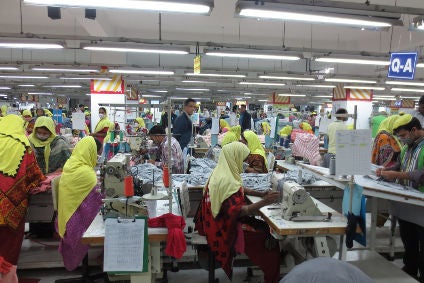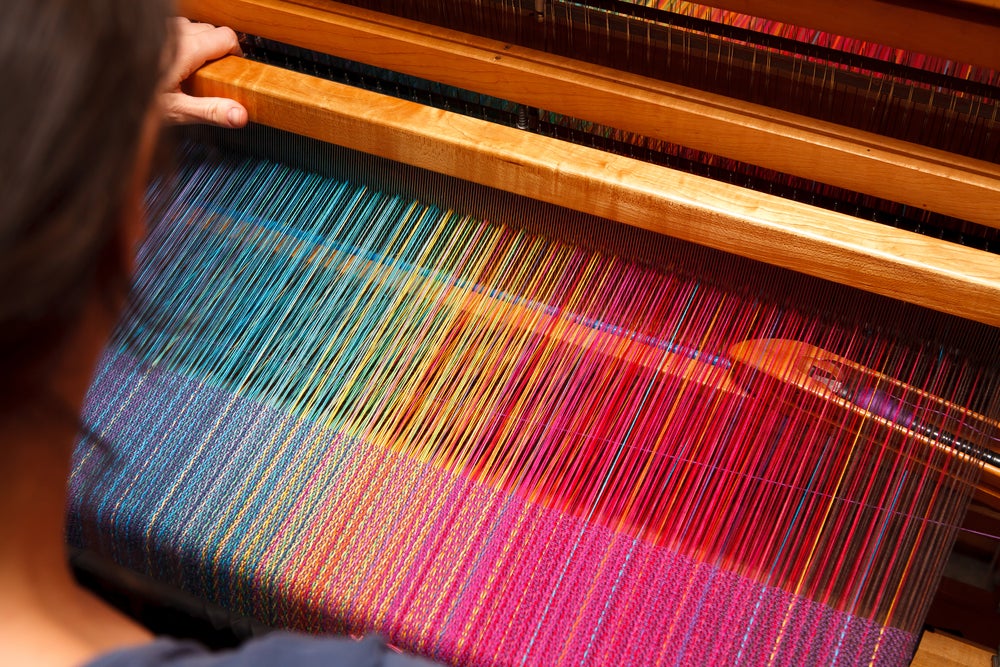
Rather than redrawing global sourcing maps, the Covid-19 pandemic has accelerated and deepened a number of pre-existing trends – including a diversification of supplier portfolios – new research suggests.
Other shifts appear to show a decreased reliance on China, and more advanced use of digital and remote tools to manage quality and compliance. The production of personal protective equipment (PPE) has propped up the struggling apparel sector, and in a turbulent sourcing landscape, flexible, agile, highly digitised supply chains are key to continued survival.
The changes are outlined by supply chain compliance solutions provider QIMA in its latest quarterly barometer report, which tracks global supply chain inspection and audit demand.
So far in 2020, China sourcing has followed a distinct W-shaped pattern of decline and recovery. After the initial stall during the Covid-19 lockdown (-33% year-on-year in January-February 2020), manufacturing showed signs of recovery in March (-12% year-on-year), followed by another downturn in April (-22% year-on-year) as demand from Western buyers collapsed.
With restrictions easing in the West, it would appear that China sourcing is due for another – potentially more lasting – rebound, since demand for inspection and audits picked up from May onward (-5.5% year-on-year in May, +1% year-on-year in June).
How well do you really know your competitors?
Access the most comprehensive Company Profiles on the market, powered by GlobalData. Save hours of research. Gain competitive edge.

Thank you!
Your download email will arrive shortly
Not ready to buy yet? Download a free sample
We are confident about the unique quality of our Company Profiles. However, we want you to make the most beneficial decision for your business, so we offer a free sample that you can download by submitting the below form
By GlobalDataSee Also:
EU buyers have played an important part in China’s rebound, with demand for inspections and audits spiking by +16% year-on-year in May and +28% in June.
Meanwhile, many US buyers are finding it hard to make a clean break from China: inspection demand in Q2 was down -12%, far from the expected cliff edge drop. Indeed, in a July QIMA survey that polled 200+ businesses globally on their sourcing patterns, 87% of US respondents still cited China among their top three sourcing geographies, and 60% did more than half of their sourcing from China.
Asia lockdowns
Sourcing in Asia’s manufacturing hubs outside of China was decimated in the first two months of Q2 as Covid-19 related lockdowns set in. Across Southeast Asia, including Vietnam, Cambodia, Indonesia, Myanmar and others, demand for inspections and audits collapsed -52% year-on-year in April.
During the same period, sourcing came to a virtual standstill in South Asia, with inspection demand down -96% in April and -74% in May as the region introduced even more dramatic lockdowns than China in an attempt to contain the virus.
June marked the start of a rebound for Asian manufacturers outside of China, with volumes picking up again in the Philippines, Malaysia and Myanmar. Vietnam enjoyed renewed popularity among US brands, with inspection demand +42% year-on-year in June.
Meanwhile, in South Asia, Bangladesh saw the start of a recovery with an influx of orders from EU and US buyers alike (+49% year-on-year in June). However, given the region’s continued struggle with the Covid-19 pandemic, the road to recovery is likely to be bumpy.
Sourcing diversification
While sourcing diversification remains a prominent trend, results of the QIMA survey reveal a correlation between where a business is headquartered and how likely it is to change up its suppliers in 2020.
For instance, over half of EU based respondents indicated that they have no immediate plans to further shift their sourcing; the same was true for almost a third of respondents based in Asia (outside of China).
By contrast, almost 95% of US based respondents had plans to change suppliers due to the Covid-19 pandemic and the ongoing concerns around the US-China trade war, with top destinations of choice being Vietnam (cited by half of all US respondents) and South Asia (30% of respondents expressed a preference for Bangladesh or India).
PPE production
Throughout the first and especially the second quarter of 2020, PPE production has helped mitigate some of the pandemic’s impact on multiple links of global supply chains, ranging from raw materials and manufacturing to logistics and quality control.
Furthermore, PPE has also proved a much-needed life raft for the textile and apparel sector, which has been battered by store closings, manufacturing delays and shifting demand (inspections and audits in H1 2020 -21% year-on-year).
By now, a number of countries, including China, Vietnam, Bangladesh, Cambodia and Myanmar, have repurposed a share of their apparel manufacturing capacities for PPE production.
Between January and May 2020, QIMA inspection volumes on PPE items increased 30-fold, with over 1.2bn face masks inspected in Q2.
Risk of worker exploitation
Restarting manufacturing in a safe manner has been this quarter’s central challenge for any region where lockdowns were being lifted, triggering a host of worker safety issues.
A prominent example is Bangladesh, where factories showed low compliance with government-mandated health and safety guidelines, increasing the risk of exposure. In response to such challenges, QIMA has seen increased demand for sanitation audits.
Furthermore, increased hygiene and sanitation procedures in factories, while necessary, create potential compliance challenges: such as the risk of exploitation if relevant duties are assigned to regular factory staff as mandatory or as unpaid overtime.
Given these new risks, brands are recommended to place extra scrutiny on working hours and wage compliance, an area in which QIMA auditors recorded critical violations in 7.1% of factories audited in H1 2020.
Digitised supply chains
The ongoing, truly seismic impact of the Covid-19 pandemic on global supply chains has kicked a number of major pre-existing trends into overdrive, with an added slew of new risks.
The supply chain landscape is likely to remain turbulent until the pandemic is contained, with any existing or reinstated lockdowns causing sharp fluctuations in both production and demand.
To respond to such fluctuations quickly, it is now more important than ever for brands and retailers to evolve their supply chain strategies for maximum flexibility and agility, as well as step up the use of digital supply chain solutions to manage quality and compliance remotely.
Indeed, almost two-thirds of respondents of the QIMA survey reported that the pandemic has accelerated their company’s resolve to digitise their supply chain in 2020, including the use of new digital and remote solutions.








